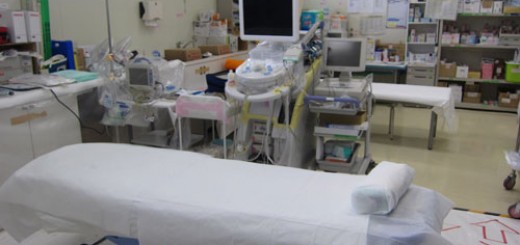Fukushima Now Part 1: ALPS-Treated Contaminated Water
By Yamaguchi Yukio (CNIC Co-Director)
Originally, “decommissioning” of the Tokyo Electric Power Company’s Fukushima Daiichi Nuclear Power Station (TEPCO FDNPS) was to take 30 to 40 years, but that is all apple pie in the sky. Realistic “experts” have begun to talk more in terms of a hundred to several hundred years. The government argues that oceanic release of the contaminated water treated by ALPS is unavoidable for decommissioning, but this is rubbish.
I had an opportunity to hear a radio documentary produced by young people who were three years old when they evacuated on the fated day, March 11, 2011, and are now first year students at the Fukushima Prefecture Soma High School. The seven-minute documentary was entitled “Do you know about the ALPS-treated water?” The documentary firstly asked the students in the first and second years in the 2022 academic year at the high school whether or not they approved of the “oceanic release of the ALPS-treated water.” They also asked, “What do you think about the implementation of the oceanic release despite the failure to obtain the understanding of the people involved?”
Responses to the first question were 41% for and 55% against. One response in favor of the release was qualified by the statement “as long as it is as safe as can possibly be.” However, all responses to the second question were negative. They also asked the teachers at the high school. One teacher who opposed the releases replied, “The people involved means all the people in the world. At the very least, all the people in Japan are the people involved.” One teacher who was in favor of the releases also responded, “after gaining the understanding of the people involved.” The journalist Aoki Miki says there are alternative proposals. Ms. Aoki has said, for example, that the water could be stored in large tanks, or solidified in concrete and stored on land – there are large areas of land where that is possible.
To know more about what people overseas think, when Professor Norma Field, author and emeritus professor of Japanese studies at the University of Chicago, was asked, she was vehemently opposed, replying, “The sea is the common property of humankind. It is impermissible for one country to dump their contamination in the ocean. Even if it is safe, it is necessary to seek agreement from all the world’s people. Young people in the Pacific islands are strongly opposed to the releases.”
The young people, who did their research and produced the radio documentary, said they felt a strong sense of anger at the government, which stubbornly insisted on the releases and went ahead with them coercively to the detriment of other proposals.
Tritium is produced when uranium undergoes ternary fission. It is also produced from boron and lithium included in NPP coolant water. Tritium will occur as long as NPPs are operated and is intimately connected with nuclear power. If the Rokkasho reprocessing plant is operated, huge amounts of tritium, incomparable with amounts from NPPs, will be released to the ocean and atmosphere when spent nuclear fuel rods are cut open.
Some “experts” have written that tritium is a radioactive substance that gives off only weak radiation with a short range and therefore has a negligible effect on DNA. However, since air and water pollution due to atmospheric nuclear testing became an issue, too many research papers to mention have stated that tritium itself, as well as organically bonded tritium, is an extremely dangerous substance. It is also known that tritium moves up the food chain from plankton, to seaweeds, and then on up through small fish to larger fish. Serious internal exposure from beta rays inside living bodies, and the helium nuclei produced by beta decay changes chemical bonds in the bases that make up DNA.
In ALPS-treated water, it is not only the tritium that cannot be removed that is a problem. While below the standards, of 29 nuclides that are subject to assessment, significant amounts of nine nuclides have been detected in the water. The largest of these is C-14, with a half-life of 5,730 years. At 1.4 × 10 becquerels/liter, it can be calculated that 110 million becquerels were present in the first oceanic release of a total of 7,788 tons of water. A total of 16 million becquerels of I-129, with a half-life of 15.7 million years were also released. Co-60, Sr-90, Y-90, Tc-99, Sb-125, Te-125m were also included. The released water is therefore nothing less than contaminated water. We should not overlook the fact that vast amounts of radioactive materials have been continuously leaking, with no way of preventing it, from the FDNPS plant from March 11, 2011 right through to this very day*.
*Please see CNIC’s Brief

